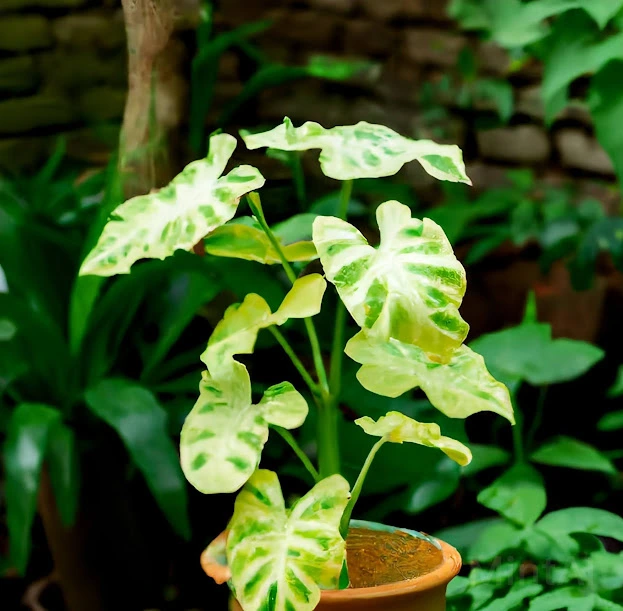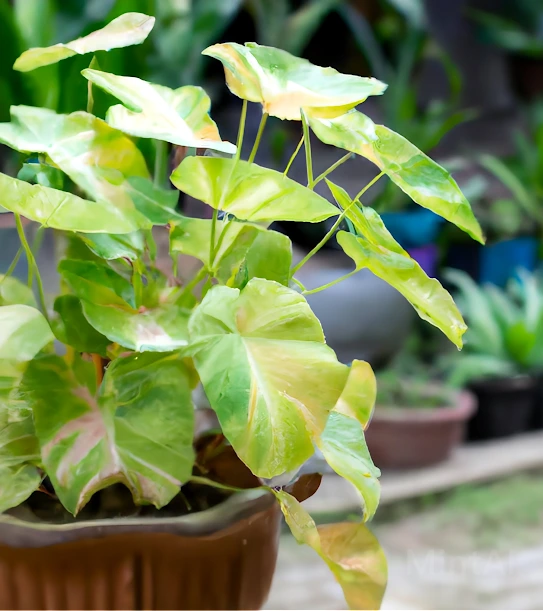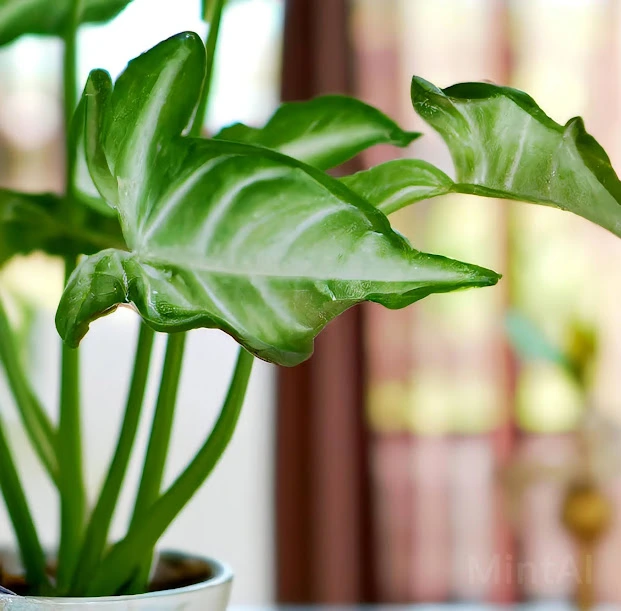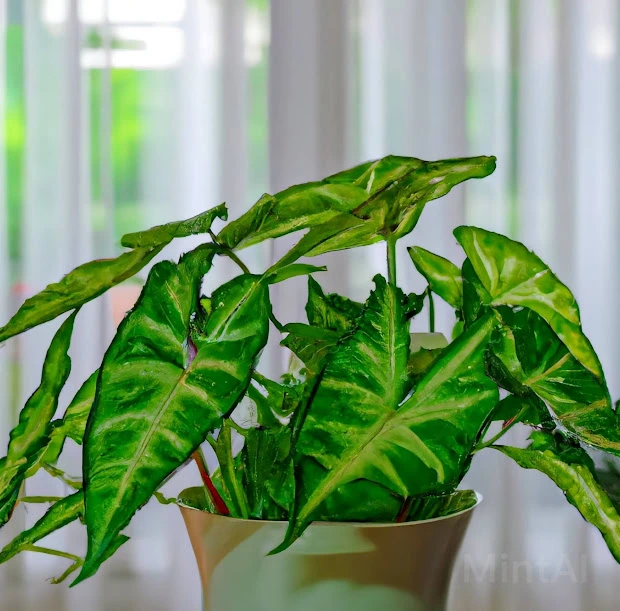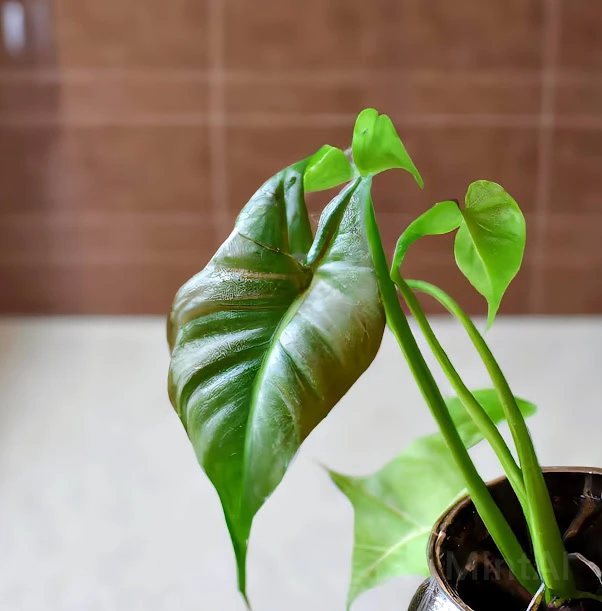Why Are My Arrowhead Plant Leaves Turning Yellow?
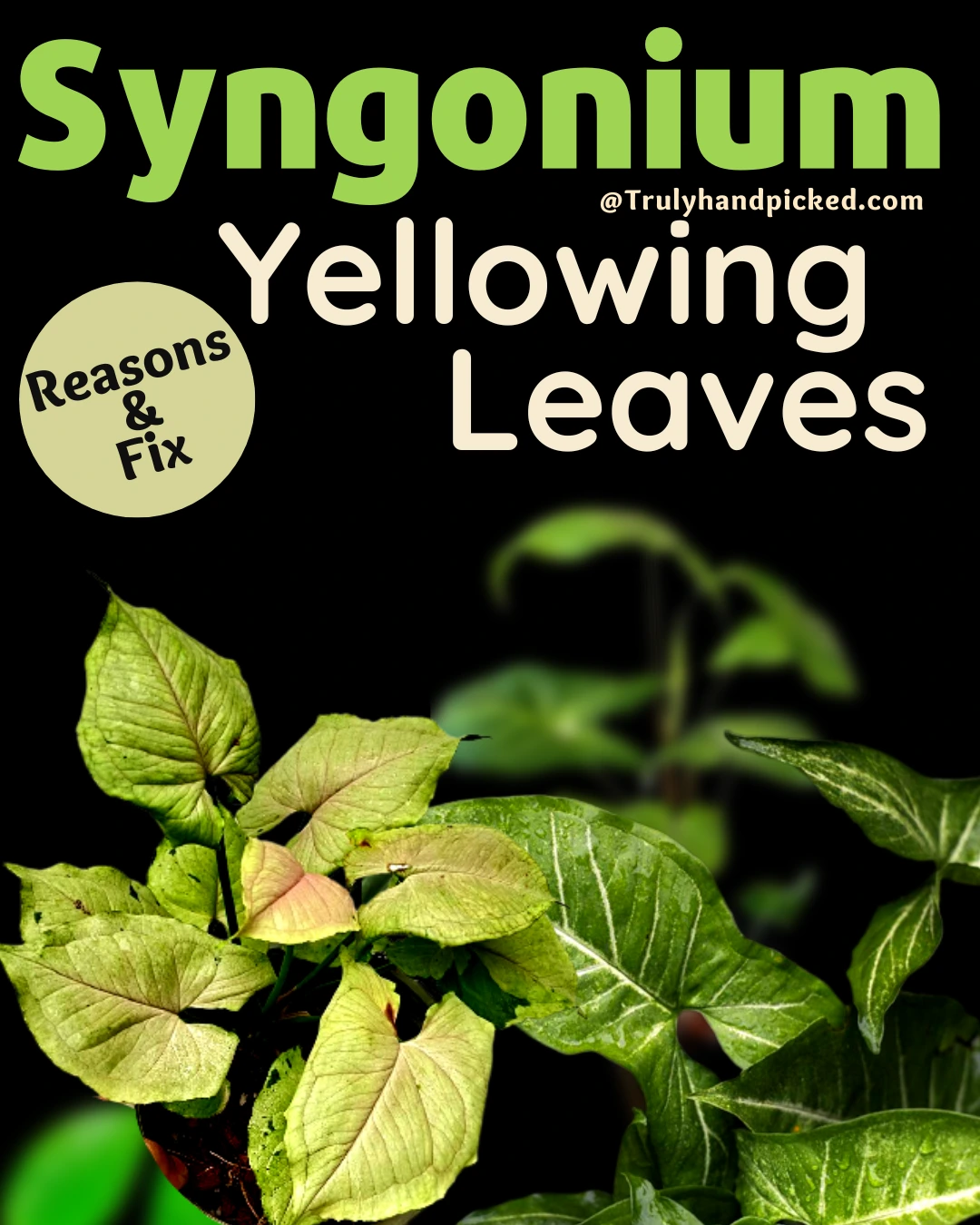
Arrowhead plant is the common name of the Syngonium plant. This plant grows attractive spade-like leaves in a quiet arrow shape.
Leaves breed in various types of green shades starting from deep green to light green, sea green, or even lighter tannins, and sometimes, in a pinkish color.
But if you ever notice that the leaves of your indoor or outdoor Syngonium plant are turning yellow, you must give it better attention. Yellow leaves are one of the most typical troubleshooting issues a growing arrowhead plant may face.
Reasons for Yellowing Leaves:
The most common reasons for this problem, are-
- Dry soil due to improper watering
- Low humidity by placing the planter in direct sunlight
- Inadequate sunlight by placing the planter in a spot with complete shade
- Low sun exposure due to keeping the plant away from bright sunlight
- Poor fertilization by feeding your plant irregularly
- Untreated pests’ issues by not applying remedies for insects
- And for the aging process is quite natural and inevitable for every plant
How to Fix:
Fortunately, you can reverse those yellow leaves to green again with some smart solution tricks. All you need to do is catch the problem at its early stage and apply the solution as soon as possible-
- Water the plant consistently once every 6-8 days
- Never let the soil dry completely or be soggy with over-watering
- Keep the plant in a spot where it can get bright but indirect sunlight steadily for 6-8 hours
- Make sure you place the planter in a highly humid spot in the house
- Feed your plant with the required amount of nutrient-rich fertilizer once a month
- Never skip fertilization during the growing seasons like spring or summer
- Apply every possible remedy for any kind of pest or bug, once you detect them around your plant
- Try to have some patience when your plant is going through the aging process when yellow leaves are one common and inevitable outcome of this plant.
Yellowing Leaves in Detail
Yellow leaves on a Syngonium plant can be as perplexing as a riddle without a clear answer.
1. Differentiating Normal Leaf Shedding from Premature Yellowing:
- Just like trees lose leaves in the fall, Syngoniums also naturally shed old leaves.
- Normal leaf shedding typically involves older leaves, and the process is gradual and orderly.
- These leaves often turn yellow before dropping, but it’s part of their life cycle.
2. Syngonium Leaf Lifecycle and Expected Yellowing:
- Syngonium leaves, like chapters in a book, have distinct stages in their life.
- New leaves emerge with a vibrant green hue, akin to the birth of a story.
- As the leaves age, they naturally start to turn yellow before they fall – it’s like the closing chapter.
- Premature yellowing occurs when leaves turn yellow before their time, like skipping to the end of a novel too soon.
- This can be caused by various factors like stress, pests, or nutrient imbalances.
- Understanding this natural progression helps distinguish between normal leaf shedding and worrisome yellowing.
3. Inspecting Light Exposure: Too Much or Too Little?
- Light is like the energy source for your Syngonium.
- Too much light, and it’s like a sunburn on your leaves.
- Too little light, and your plant might get pale, like it’s lost in the shade.
4. The Temperature Puzzle: Unraveling the Effects of Extremes
- Temperature is like the weather for your Syngonium.
- Too hot, and it’s like a scorching summer day.
- Too cold, and your plant might shiver and turn yellow, just like you in freezing weather.
5. Yellowing Coz of Overwatering: Signs, Consequences, and Prevention
- Overwatering is like drowning your plant – it can’t breathe!
- Signs include wilting, yellowing, and even root rot.
- Prevention is as simple as letting the soil dry out a bit before watering again.
6. Underwatering Troubles: Recognizing the Symptoms and Finding the Right Balance
- Underwatering is like not giving your plant a drink on a hot day.
- Your Syngonium will droop and show signs of thirst.
- Finding the balance means watering when the soil is dry but not bone dry.
7. Soil Drainage: Investigating the Link Between Compacted Soil and Yellow Leaves
- Soil is like the foundation for your plant’s house.
- Compacted soil can suffocate the roots, making leaves sad and yellow.
- Improve drainage by adding perlite or pumice to the soil mix.
8. Nutrient Deficiencies: Identifying Key Nutrients and Their Role in Leaf Health
- Nutrients are like vitamins for your Syngonium.
- Nitrogen, iron, and other nutrients are vital for green, healthy leaves.
- Identify deficiencies by observing yellowing patterns and address them with balanced fertilizers.
9. Humidity Needs of Syngonium: Understanding Their Tropical Origins
- Syngoniums come from tropical places – think rainforests!
- They love humidity, like how you enjoy a steamy shower.
10. How to Maintain Appropriate Humidity Levels to Prevent Yellowing
- Create a mini rainforest at home by misting your plant or using a humidity tray.
- Syngoniums will reward you with lush, green leaves when they’re in their comfort zone.
11. Pesky Pests: Recognizing Aphids, Spider Mites, and Other Potential Culprits
- Pests are like unwelcome guests at your plant party.
- Aphids suck plant juices, while spider mites weave tiny webs.
- Spotting them early and taking action is key to keeping your Syngonium healthy.
12. Fungal and Bacterial Concerns: Addressing Root Rot and Leaf Spot Issues
- Fungal and bacterial diseases are like plant infections.
- Root rot and leaf spots can turn leaves yellow.
- Proper watering practices, well-draining soil, and good air circulation help keep these intruders at bay
Why My Syngonium Plant Leaves Are Curling?
One of the common problems of a growing Syngonium plant is curling leaves. A thriving arrowhead plant with pinkish foliage over vining stems can add an extra amazing tropical touch to your home for no doubt.
However, this view could get interrupted by a small disruption of the looks of arrowhead leaves. Curling leaves are one of those kinds. Let’s find out the possible causes of this issue-
- Insufficient water like overwatering or underwatering
- Low humidity level
- Too much sun exposure
- High temperatures like more than 80° or 90° F
- Salt buildup on the stem due to overfertilization
- Untreated pests or bugs problem
- And keeping the plant inattentive for long with less care
Attempt to maintain the caring process of the plant accordingly, to keep the curl-leaf issue at bay, and let the leaves in pink as long as they can.

FAQ on Curling Leaves
Q1: Why are the leaves of my Syngonium curling?
- A: Curling leaves in Syngonium can result from several causes. If the curling is uniform across the entire plant, it might indicate a lack of humidity. To address this, increase humidity levels around your Syngonium by misting its leaves regularly or placing it on a humidity tray.
Q2: Can environmental factors like light affect leaf curling in Syngonium?
- A: Yes, light is crucial for Syngonium health. Curling leaves could suggest insufficient light. To remedy this, move your plant to a spot with bright, indirect sunlight. Avoid direct sunlight, which can scorch the leaves.
Q3: Is overwatering linked to leaf curling in Syngonium plants?
- A: Overwatering can stress the roots and lead to curled leaves. To address this, allow the top inch of the soil to dry before watering again. Ensure proper drainage in the pot to prevent waterlogged soil.
Q4: Can underwatering result in leaf curling in Syngonium?
- A: Yes, underwatering can also cause leaves to curl as the plant conserves moisture. To prevent this, maintain a consistent watering schedule, ensuring the soil remains slightly moist but not waterlogged.
Q5: How do I address curling leaves caused by low humidity in my Syngonium?
- A: To combat low humidity-related leaf curling, increase the humidity around your Syngonium. You can do this by regularly misting the leaves or placing a tray of water with pebbles near the plant to create a humid microenvironment.
Q6: Are there common pests that can cause leaf curling in Syngonium plants?
- A: Yes, pests like spider mites and aphids can damage Syngonium leaves, causing curling and other issues. Inspect your plant carefully, especially the undersides of leaves. Gently wipe the affected leaves with a damp cloth and treat them with insecticidal soap to eliminate these pests.
Q7: Could nutrient deficiencies be responsible for curled leaves in my Syngonium?
- A: Nutrient deficiencies, especially calcium or magnesium, can lead to curled leaves. To address this, consider using a balanced, water-soluble fertilizer formulated for indoor plants and follow the recommended feeding schedule to ensure your Syngonium gets the necessary nutrients.
Syngonium Plant Care:
Syngonium or arrowhead plant native to the tropical rainforest and thus prefers a wild-like climate to thrive. Here we come with some easy tips on how to give a growing Syngonium plant perfect care in an indoor climate-
- Soil: It prefers loose and sandy-type soil with well-drained quality. Prepare the potting mix using coco peat, leaf mold, and vermicompost with slightly acidic quality for the best result.
- Water: Try to water an arrowhead plant regularly during the scorching season. You can reduce watering in the winter and rainy seasons. Never let the soil be extra soggy or too dry for a healthy outcome of your cultivation.
- Fertilization: Feed your plant using any regular liquid fertilizer in diluted form with half of the strength. Try fertilization every 2-4 weeks during heavy growing sessions like spring or summer.
- Sun Expose: Put the planter of your Syngonium plant in a spot where it can get bright light through indirect sunlight. Remember that an arrowhead plant thrives best while putting under the sun with partial shade.
- Climate: Being a tropical plant, Syngonium always prefers high humidity or heavy moisture levels around its growing area. So, try to add an artificial humidifier for the best result. Try to keep the temperature over 60° F or below 85° F to maintain the best thriving condition for your growing arrowhead plant.
- Prune: Pruning is as essential as watering or fertilization to keep your growing Syngonium plant healthy enough. The tender stems and classy foliage of an arrowhead plant will grow more healthily when you keep the unwanted parts away from the newly growing parts.
- Pests: Scales, aphids, spider mites, mealybugs, etc. are some common pests and bug issues you can get from a growing Syngonium plant. Try to apply natural and chemical-free solutions like neem oil or soapy water for a quick yet harmless remedy.
FAQ Recap on Syngonium Yellow Leaves
Q1: Why are the leaves of my Syngonium turning yellow?
- A: Yellowing leaves in Syngonium can be due to several factors. It could be natural leaf aging, environmental stress, overwatering, underwatering, nutrient deficiencies, low humidity, pests, or diseases. Identifying the specific cause is crucial for effective treatment.
Q2: How do I know if my Syngonium’s yellowing leaves are due to natural aging or a problem?
- A: Normal leaf shedding involves older leaves turning yellow before falling off. Premature yellowing, on the other hand, is often a sign of stress, watering issues, or pests. Observe the pattern and age of the affected leaves to differentiate.
Q3: Can excessive sunlight cause Syngonium leaves to turn yellow?
- A: Yes, too much direct sunlight can stress Syngonium plants, leading to yellowing leaves. Ensure they receive the appropriate amount of filtered or indirect light to prevent sunburn.
Q4: Is overwatering a common reason for yellowing leaves in Syngonium?
- A: Overwatering is a common cause of yellowing leaves. Soggy soil can suffocate roots and hinder nutrient absorption. Allow the soil to partially dry between waterings to prevent this issue.
Q5: What should I do if my Syngonium is underwatered and the leaves are turning yellow?
- A: Syngoniums require consistent moisture. If you notice wilting and yellowing leaves due to underwatering, water your plant thoroughly and maintain a regular watering schedule.
Q6: How can I address nutrient deficiencies causing yellow leaves in my Syngonium?
- A: Use a balanced, water-soluble fertilizer to provide essential nutrients to your Syngonium. Monitor the plant’s nutrient needs and adjust the feeding schedule accordingly.
Q7: What humidity levels do Syngonium plants prefer to prevent yellowing leaves?
- A: Syngoniums prefer high humidity levels, similar to their tropical origins. Maintain humidity through methods like misting, humidity trays, or a humidifier to keep leaves green.
Q8: Are there common pests that can cause yellow spots on Syngonium leaves?
- A: Yes, pests like aphids and spider mites can damage Syngonium leaves, resulting in yellow spots. Regularly inspect your plant and take measures to control pests if necessary.
Q9: Can diseases like root rot lead to yellowing leaves in Syngonium?
- A: Yes, fungal or bacterial diseases, including root rot or leaf spots, can cause yellowing leaves. Proper watering practices, good ventilation, and a clean environment can help prevent these issues.
Arrowhead or Syngonium Plant Propagation in Water:
Arrowhead or Syngonium plant propagation can be effortless even in the water by following these easy processes-
Supplies You Will Need:
- A sharp and disinfected cutter
- A glass
- Distilled water
- And a plastic bag
How to Grow Syngonium in Water from Cuttings -> Step-by-Step Ideas – Lush Garden Youtube Video
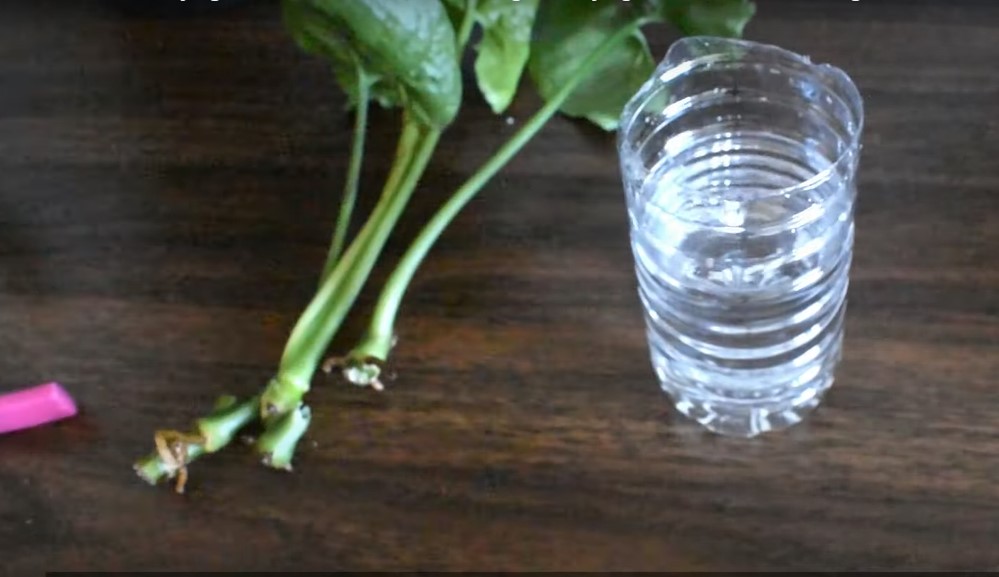
How to Propagate
- Find out a healthy shoot out of the parent plant first
- Cut that part out about 6-12 inches in length carefully
- Make sure you trim the stem cutting along with its nod section
- Pop the cutting into a glass of distilled water
- Keep the nod part below the water surface
- Don’t forget to remove the leaves from the end of that cutting
- Keep changing the water every 7-9 days without shaking the cutting much
- Cover the entire glass with a plastic bag to keep the humid level perfect
- You will find that new roots will come within 12-14 days
- Let the root grow a bit longer vigorously for a few more days
- Once the root turns stronger enough, plant the cutting in a planter with the preferred potting mix
You should always be careful here by keeping the water level topped up to make the process successful.
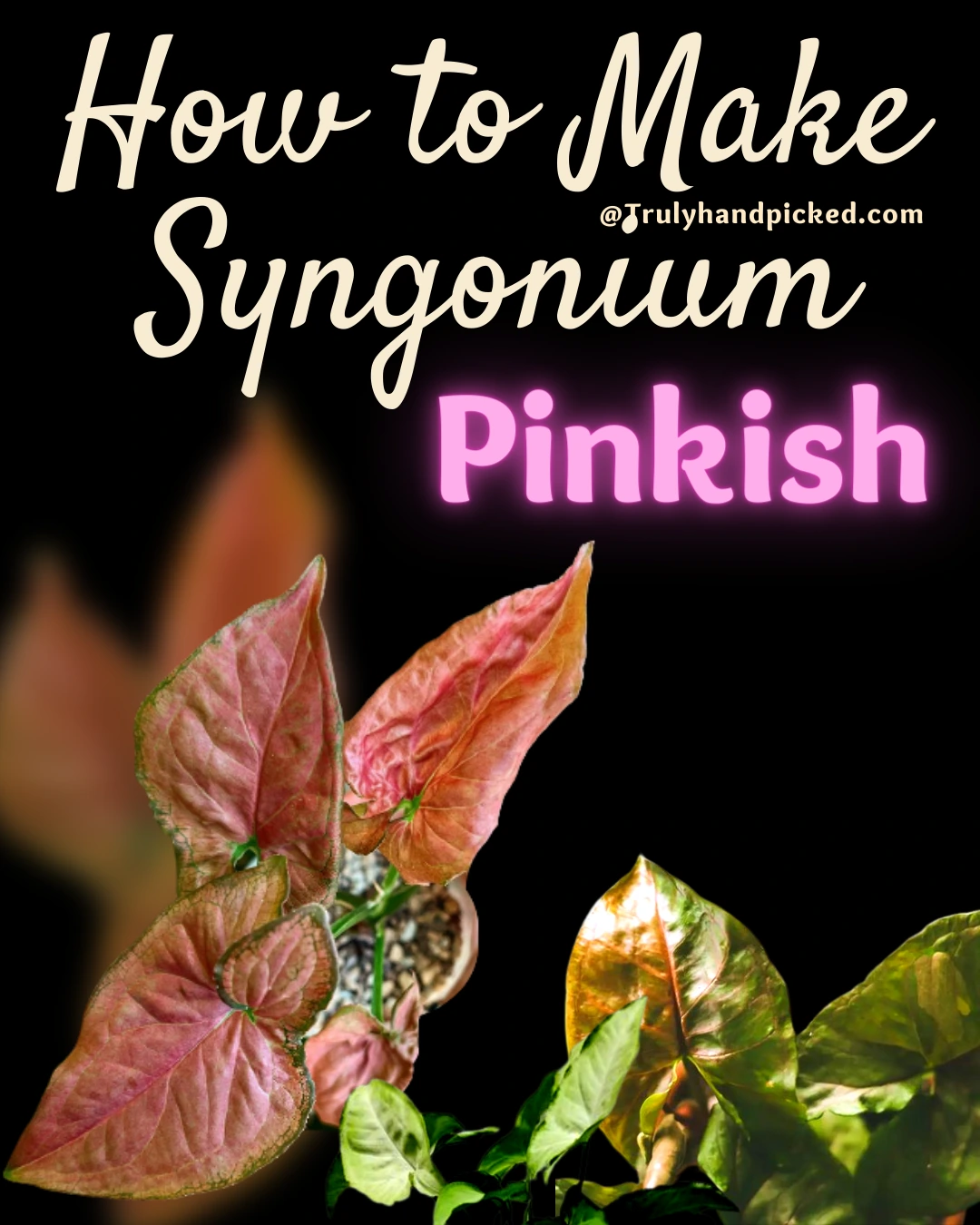
How to Make Syngonium More Pinkish?
Most indoor gardeners claim that they prefer the Syngonium plant to keep pinkish for an exclusive look from this ornamental tropical plant, rather than a greenish one. Here are some smart and quick tips on how to make the foliage more pinkish and maintain them naturally-
- Place the planter under a low to medium-low light with slight sun expose
- Grow the plant vertically in a hanging basket, instead of horizontally in a planter
- Use filtered or distilled water with the proper amount throughout the growing session
- Be certain about the temperature and maintain it between 60° to 80° F consistently
- Apply an artificial humidifier and never let the humidity level below 40-60% ever
- Use slow-release fertilizer in liquid form t keep the feeding process sluggish yet steady
- And prune the unwanted or unhealthy parts proximately, to give the new shoots enough space as well uninterrupted planetary to thrive
Also Read: Beautiful Trees with Pink Flowers
Is Syngonium Toxic to Cats?

An arrowhead or Syngonium plant is toxic to cats or any other house pets.
Why is it Poisonous to Cats?
This vining plant produces oxalate crystals which can hurt your cat when ingested. This insoluble toxic element immediately starts spreading some uncontrollable health issues to your loving pet. Things could turn fetal sometimes if you don’t seek remedy methods instantly.
Reactions:
- Oral irritation
- Vomiting
- Extreme drooling
- Heavy respiratory rate
- Breathing difficulty
- And perplexes
How to take care if the pet has ingested it?
- Take your cat to the nearest veterinarian immediately
- Try to give your cat an instant diagnosis
- Encourage your cat to vomit once you find that it has gulped some parts of Syngonium
- Apply a mild amount of antihistamine to keep the mouth irritation tolerable for your pet until it gets proper medical help.
